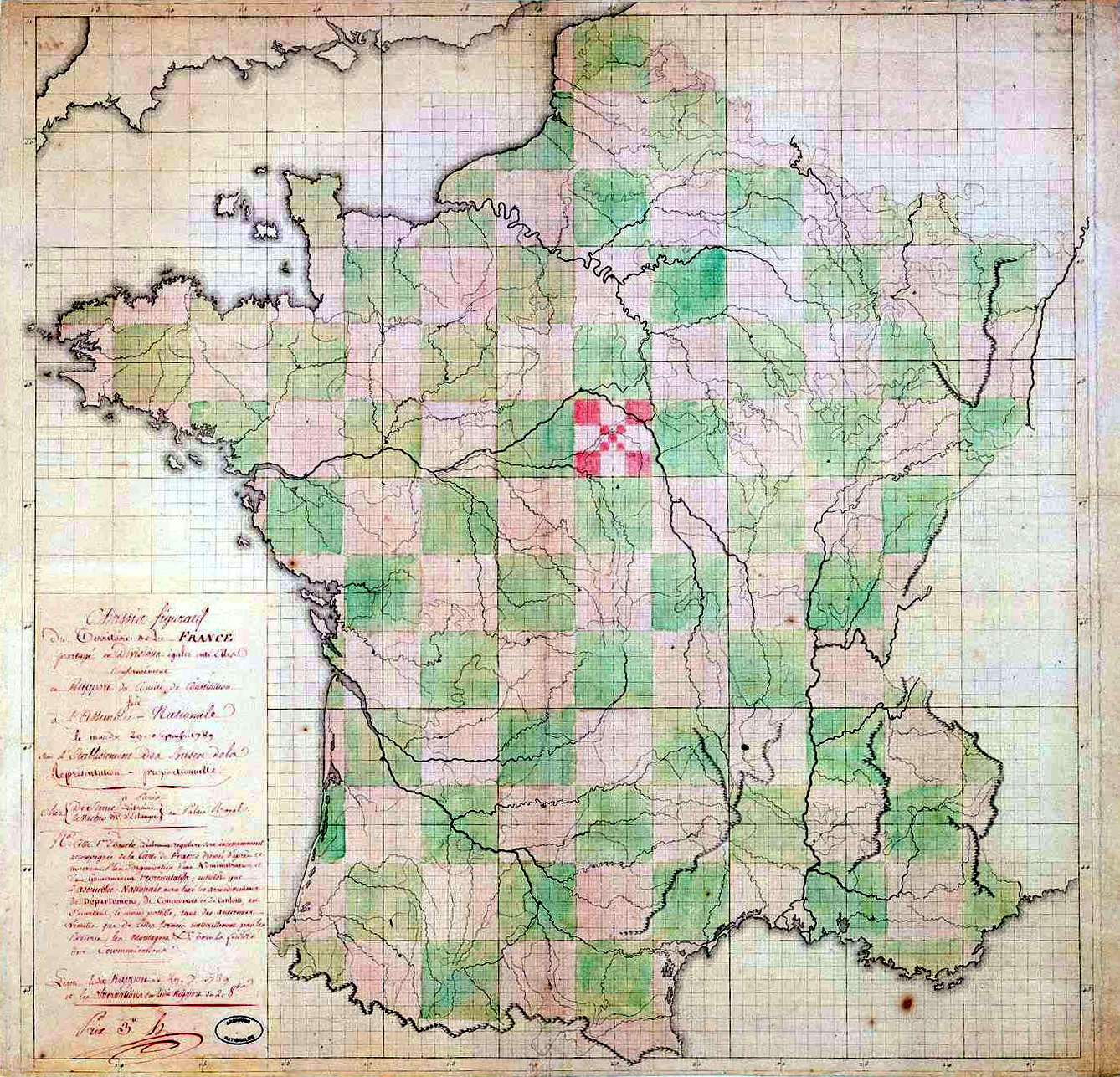|
Préfet
A prefect (, plural , both ) in France is the State's representative in a department or region. Regional prefects are ''ex officio'' the departmental prefects of the regional prefecture. Prefects are tasked with upholding the law in the department they serve in, including controlling the actions of local authorities. Prefects are appointed by decree by the President of France when presiding over the government's Council of Ministers, following a proposal by the Prime Minister and the Minister of the Interior. They serve at the government's discretion and can be replaced at any meeting of the Council of Ministers. To uphold the law, they are authorised to undertake a wide variety of actions, such as coordinating police forces, enforcing immigration rules, controlling authorities' finances, as well as suing local collectivities in the name of the State. The prefects in Lille, Rennes, Bordeaux, Marseille, Lyon and Strasbourg each have additional tasks as heads of their regional defe ... [...More Info...] [...Related Items...] OR: [Wikipedia] [Google] [Baidu] [Amazon] |
Prefect
Prefect (from the Latin ''praefectus'', substantive adjectival form of ''praeficere'': "put in front", meaning in charge) is a magisterial title of varying definition, but essentially refers to the leader of an administrative area. A prefect's office, department, or area of control is called a prefecture, but in various post-Roman Empire cases there is a prefect without a prefecture or ''vice versa''. The words "prefect" and "prefecture" are also used, more or less conventionally, to render analogous words in other languages, especially Romance languages. Ancient Rome ''Praefectus'' was the formal title of many, fairly low to high-ranking officials in ancient Rome, whose authority was not embodied in their person (as it was with elected Magistrates) but conferred by delegation from a higher authority. They did have some authority in their prefecture such as controlling prisons and in civil administration. Feudal times Especially in Medieval Latin, ''præfectus'' was used to ... [...More Info...] [...Related Items...] OR: [Wikipedia] [Google] [Baidu] [Amazon] |
Subprefect
A subprefect is a senior government official in several countries at the local level, such as Brazil and France. Brazil In Brazil, a subprefect (''subprefeito'') is the highest official of a subprefecture, which is a subdivision of certain large Municipalities of Brazil, municipalities (São Paulo, Rio de Janeiro). The subprefect serves under the municipality's prefect (''prefeito''). France In France, a subprefect (, ) is the top official in a Departments of France, departmental Arrondissements of France, arrondissement that is not the arrondissement of the Prefectures in France, prefecture. The subprefect, who is appointed by the President of France, serves under the department's Prefect (France), prefect (). [...More Info...] [...Related Items...] OR: [Wikipedia] [Google] [Baidu] [Amazon] |
Arrondissements Of France
An ''arrondissement'' (, ) is the third level of administrative division in France generally corresponding to the territory overseen by a subprefect. As of 2023, the 101 French departments are divided into 333 arrondissements (including 13 overseas). The capital of an arrondissement is called a subprefecture. When an arrondissement contains the prefecture (capital) of the department, that prefecture is the capital of the arrondissement, acting both as a prefecture and as a subprefecture. Arrondissements are further divided into communes. The term arrondissement can be roughly translated into English as district. Some municipalities in Quebec are divided into arrondissements, reflecting the province’s historical link to New France. Role and administration The administration of an arrondissement is assigned to a subprefect () who assists the departmental prefect (). Unlike French regions, departments and communes, arrondissements do not have the status of legal entity ... [...More Info...] [...Related Items...] OR: [Wikipedia] [Google] [Baidu] [Amazon] |
Prefectures In France
In France, a prefecture (, ) may be: * the , the Communes of France, commune in which the administration of a Departments of France, department is located; * the , the commune in which the administration of a Regions of France, region is located; * the jurisdiction of a prefecture; * the official residence or headquarters of a Prefect (France), prefect. Although the administration of departments and regions is distinct, a regional prefect is ''Ex officio member, ex officio'' prefect of the department in which the regional prefecture is located. The officeholder has authority upon the other prefects in the region on a range of matters. Role of the prefecture There are 101 prefectures in France, one for each department. The official in charge is the Prefect (France), prefect (). The prefecture is an administration that belongs to the Minister of the Interior (France), Ministry of the Interior; it is therefore in charge of the delivery of identity cards, driving licenses, passports, ... [...More Info...] [...Related Items...] OR: [Wikipedia] [Google] [Baidu] [Amazon] |
Departments Of France
In the administrative divisions of France, the department (, ) is one of the three levels of government under the national level ("territorial collectivity, territorial collectivities"), between the Regions of France, administrative regions and the Communes of France, communes. There are a total of 101 departments, consisting of ninety-six departments in metropolitan France, and five Overseas department and region, overseas departments, which are also classified as overseas regions. Departments are further subdivided into 333 Arrondissements of France, arrondissements and 2,054 Cantons of France, cantons (as of 2023). These last two levels of government have no political autonomy, instead serving as the administrative basis for the local organisation of police, fire departments, and, in certain cases, elections. Each department is administered by an elected body called a departmental council (France), departmental council ( , ). From 1800 to April 2015, these were called gene ... [...More Info...] [...Related Items...] OR: [Wikipedia] [Google] [Baidu] [Amazon] |
Strasbourg
Strasbourg ( , ; ; ) is the Prefectures in France, prefecture and largest city of the Grand Est Regions of France, region of Geography of France, eastern France, in the historic region of Alsace. It is the prefecture of the Bas-Rhin Departments of France, department and the Seat of the European Parliament in Strasbourg, official seat of the European Parliament. The city has about three hundred thousand inhabitants, and together Eurométropole de Strasbourg, Greater Strasbourg and the arrondissement of Strasbourg have over five hundred thousand. Strasbourg's functional area (France), metropolitan area had a population of 860,744 in 2020, making it the eighth-largest metro area in France and home to 14% of the Grand Est region's inhabitants. The transnational Eurodistrict Strasbourg-Ortenau Eurodistrict, Strasbourg-Ortenau had a population of roughly 1,000,000 in 2022. Strasbourg is one of the ''de facto'' four main capitals of the European Union (alongside Brussels, Luxembourg ... [...More Info...] [...Related Items...] OR: [Wikipedia] [Google] [Baidu] [Amazon] |
Constitution Of France
The current Constitution of France was adopted on 4 October 1958. It is typically called the Constitution of the Fifth Republic , and it replaced the Constitution of the Fourth Republic of 1946 with the exception of the preamble per a 1971 decision of the Constitutional Council. The current Constitution regards the separation of church and state, democracy, social welfare, and indivisibility as core principles of the French state. Charles de Gaulle was the main driving force in introducing the new constitution and inaugurating the Fifth Republic, while the text was drafted by Michel Debré. Since then, the constitution has been amended twenty-five times, notably in 2008 and most recently in 2024. Provisions Preamble The preamble of the constitution recalls the ''Declaration of the Rights of Man and of the Citizen'' from 1789 and establishes France as a secular and democratic country, deriving its sovereignty from the people. Since 2005 it includes the ten articles ... [...More Info...] [...Related Items...] OR: [Wikipedia] [Google] [Baidu] [Amazon] |
Encyclopedia Britannica
An encyclopedia is a reference work or compendium providing summaries of knowledge, either general or special, in a particular field or discipline. Encyclopedias are divided into article (publishing), articles or entries that are arranged Alphabetical order, alphabetically by article name or by thematic categories, or else are hyperlinked and searchable. Encyclopedia entries are longer and more detailed than those in most dictionary, dictionaries. Generally speaking, encyclopedia articles focus on ''factual information'' concerning the subject named in the article's title; this is unlike dictionary entries, which focus on Linguistics, linguistic information about words, such as their etymology, meaning, pronunciation, use, and grammar, grammatical forms.Béjoint, Henri (2000)''Modern Lexicography'', pp. 30–31. Oxford University Press. Encyclopedias have existed for around 2,000 years and have evolved considerably during that time as regards language (written in a major inte ... [...More Info...] [...Related Items...] OR: [Wikipedia] [Google] [Baidu] [Amazon] |
Intendant (government Official)
An intendant (; ; ) was, and sometimes still is, a public official, especially in France, Spain, Portugal, and Latin America. The intendancy system was a centralizing administrative system developed in France. In the War of the Spanish Succession of 1701 to 1714 the French royal House of Bourbon secured its hold on the throne of Spain; it extended a French-style intendancy system to Spain and Portugal - and subsequently worldwide through the Spanish Empire and Portuguese Empire. Regions were divided into districts, each administered by an intendant. The title continues in use in Spain and in parts of Spanish America for particular government officials. Development of the system in France Intendants were royal civil servants in France under the Old Regime. A product of the centralization policies of the French crown, intendants were appointed "commissions," and not purchasable hereditary "offices," which thus prevented the abuse of sales of royal offices and made them more tr ... [...More Info...] [...Related Items...] OR: [Wikipedia] [Google] [Baidu] [Amazon] |
Napoleon
Napoleon Bonaparte (born Napoleone di Buonaparte; 15 August 1769 – 5 May 1821), later known by his regnal name Napoleon I, was a French general and statesman who rose to prominence during the French Revolution and led Military career of Napoleon, a series of military campaigns across Europe during the French Revolutionary and Napoleonic Wars from 1796 to 1815. He led the French First Republic, French Republic as French Consulate, First Consul from 1799 to 1804, then ruled the First French Empire, French Empire as Emperor of the French from 1804 to 1814, and briefly again in 1815. He was King of Italy, King of Kingdom of Italy (Napoleonic), Italy from 1805 to 1814 and Protector of the Confederation of the Rhine, Protector of the Confederation of the Rhine from 1806 to 1813. Born on the island of Corsica to a family of Italian origin, Napoleon moved to mainland France in 1779 and was commissioned as an officer in the French Royal Army in 1785. He supported the French Rev ... [...More Info...] [...Related Items...] OR: [Wikipedia] [Google] [Baidu] [Amazon] |
Consulate (France)
The Consulate () was the top-level government of the First French Republic from the fall of the Directory in the coup of 18 Brumaire on 9 November 1799 until the start of the French Empire on 18 May 1804. During this period, Napoleon Bonaparte, with his appointment as First Consul, established himself as the head of a more autocratic and centralised republican government in France while not declaring himself sole ruler. Due to the long-lasting institutions established during these years, Robert B. Holtman has called the consulate "one of the most important periods of all French history." By the end of this period, Bonaparte had engineered an authoritarian personal rule now viewed as a military dictatorship. Fall of the Directory French military disasters in 1798 and 1799 had shaken the Directory, and eventually shattered it in November 1799. Historians sometimes date the start of the political downfall of the Directory to 18 June 1799 (Coup of 30 Prairial VII by the French ... [...More Info...] [...Related Items...] OR: [Wikipedia] [Google] [Baidu] [Amazon] |








